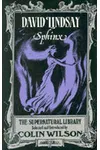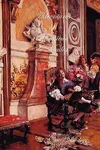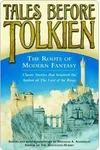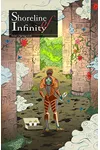Picture a Scottish dreamer weaving cosmic tales that puzzled readers yet captivated literary giants—meet David Lindsay! Born in 1876, this visionary author crafted A Voyage to Arcturus, a philosophical science fiction masterpiece that, though initially a flop, became a cult classic. With a knack for blending surrealism and metaphysics, Lindsay’s stories continue to spark wonder and inspire modern fantasy.
Despite his obscurity during his lifetime, Lindsay’s bold imagination left an indelible mark. From his Calvinist roots to his war-interrupted career, his journey as a writer is as fascinating as the alien worlds he created. Let’s dive into the life, works, and legacy of this unsung Scottish fantasist!
The Making of David Lindsay
David Lindsay was born on March 3, 1876, in Lewisham, London, to a middle-class Scottish Calvinist family with roots in Jedburgh, Scotland. Raised partly in Jedburgh, he soaked up the region’s folklore and stark landscapes, which later flavored his writing. Educated at Colfe’s School, Lewisham, Lindsay won a university scholarship but, due to financial constraints, became an insurance clerk at Lloyd’s of London. He excelled in business until World War I called him to serve at age 40, first with the Grenadier Guards, then the Royal Army Pay Corps, where he rose to corporal.
After the war, Lindsay married Jacqueline Silver and moved to Cornwall in 1919 to pursue writing full-time. His passion for music, especially Beethoven, and his fascination with Norse mythology and Scottish fantasists like George MacDonald shaped his unique literary voice. This bold leap into authorship set the stage for his groundbreaking work.
David Lindsay’s Unforgettable Stories
Lindsay’s debut, A Voyage to Arcturus (1920), is a mind-bending journey through an alien world called Tormance. The novel’s protagonist, Maskull, seeks transcendence amid vivid landscapes and philosophical trials, reflecting Lindsay’s Gnostic view of reality as an illusion to be pierced. Despite selling fewer than 600 copies initially, it later inspired C.S. Lewis’s Out of the Silent Planet and earned praise from J.R.R. Tolkien for its philosophical depth.
His follow-up, The Haunted Woman (1922), explores love and alternate realities in a mysterious house with a hidden floor, blending fantasy with psychological insight. Devil’s Tor (1932) delves into mythic and extraterrestrial themes, portraying a giant woman’s grave as a cosmic enigma. Lindsay’s final work, The Witch, remained unpublished in his lifetime but showcased his obsession with the eternal feminine and spiritual beauty. His style—dense, surreal, and metaphysical—defies easy categorization, making him a pioneer of speculative fiction.
Lindsay’s narratives often reject conventional comfort, embracing pain and transcendence, a stark contrast to the sentimental fantasies of his era. His influence on cosmic horror aligns him with writers like H.P. Lovecraft, though his Scottish roots and metaphysical focus set him apart.
Why David Lindsay Matters
Lindsay’s work, once overlooked, has surged in relevance, hailed as a bridge between 19th-century Scottish fantasy and modern surrealists like Alasdair Gray. His bold rejection of commercial norms inspired authors to explore deeper philosophical questions in speculative fiction. C.S. Lewis credited Lindsay’s influence on his Space Trilogy, while Harold Bloom’s novel The Flight to Lucifer paid homage to Arcturus, though Bloom admitted Lindsay’s original outshone his tribute.
In 1971 Othello-like tragedy, Lindsay’s life ended in 1945, after a tooth abscess led to septicaemia, compounded by the shock of a WWII bomb damaging his Brighton home. Yet, his legacy endures, with A Voyage to Arcturus adapted into a 1971 film and his works reissued as Canongate Classics. Lindsay’s fearless exploration of reality’s mysteries continues to captivate readers seeking stories that challenge and transcend.
- Born: March 3, 1876, Lewisham, London
- Key Works: A Voyage to Arcturus (1920), The Haunted Woman (1922), Devil’s Tor (1932)
- Influence: Inspired C.S. Lewis, J.R.R. Tolkien, and Harold Bloom
Snag A Voyage to Arcturus and dive into David Lindsay’s cosmic, mind-bending world—your imagination will thank you!







